
Rocking Horse with Soul

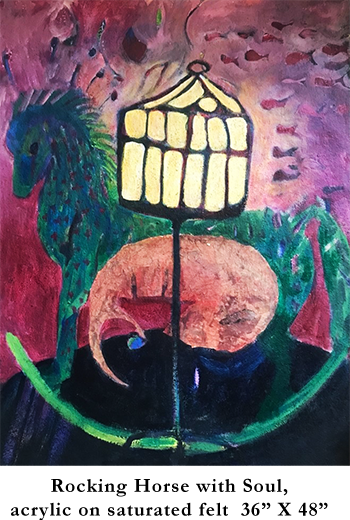 Paintings imagery most often arises of its own impetus, only later informing me of content. The space between things gets wider with awareness. Shamanism is woven through the lives as those who go between realities. Artists of all disciplines as well as children, until they learn better, naturally connect to the life energies around them.
Paintings imagery most often arises of its own impetus, only later informing me of content. The space between things gets wider with awareness. Shamanism is woven through the lives as those who go between realities. Artists of all disciplines as well as children, until they learn better, naturally connect to the life energies around them.
This image takes me back to Chejudo, the Japanese name of a small island off the southern coast of South Korea. Basaltic stacked boulders as fences crisscross the terrain where trees grow horizontally in the wind. At the center the island is a huge volcanic crater. From the rim you can see the sea on all sides with agile mountain goats dancing on the rim. The wild horses there were brought to island in ships by Genghis Khan in the Goryeo Kingdom, 918-1392.
When I was there staying there in a Buddhist temple, adjacent was an indigenous woman shaman who I found as I wondered at night looking for the chanting ritual of the nuns. She was a mudang who performed her nightly rituals by firelight. Like shamans all over the world, the mudang shape-shift into animals for knowledge and power. Later in a thatched house with basalt bolder walls I found something like a shaman museum filled with dust and spiderwebs. The fish-shape objects in a variety of carved materials is similar to Yin or Yang of that iconic symbol. It is a shape that finds its way into my paintings. I can feel the smooth polished shape, that represents the soul, in the palm of my hand before I recognize it in paint.
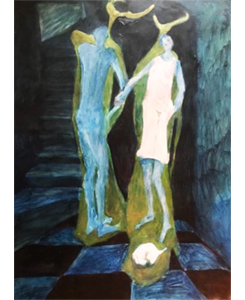
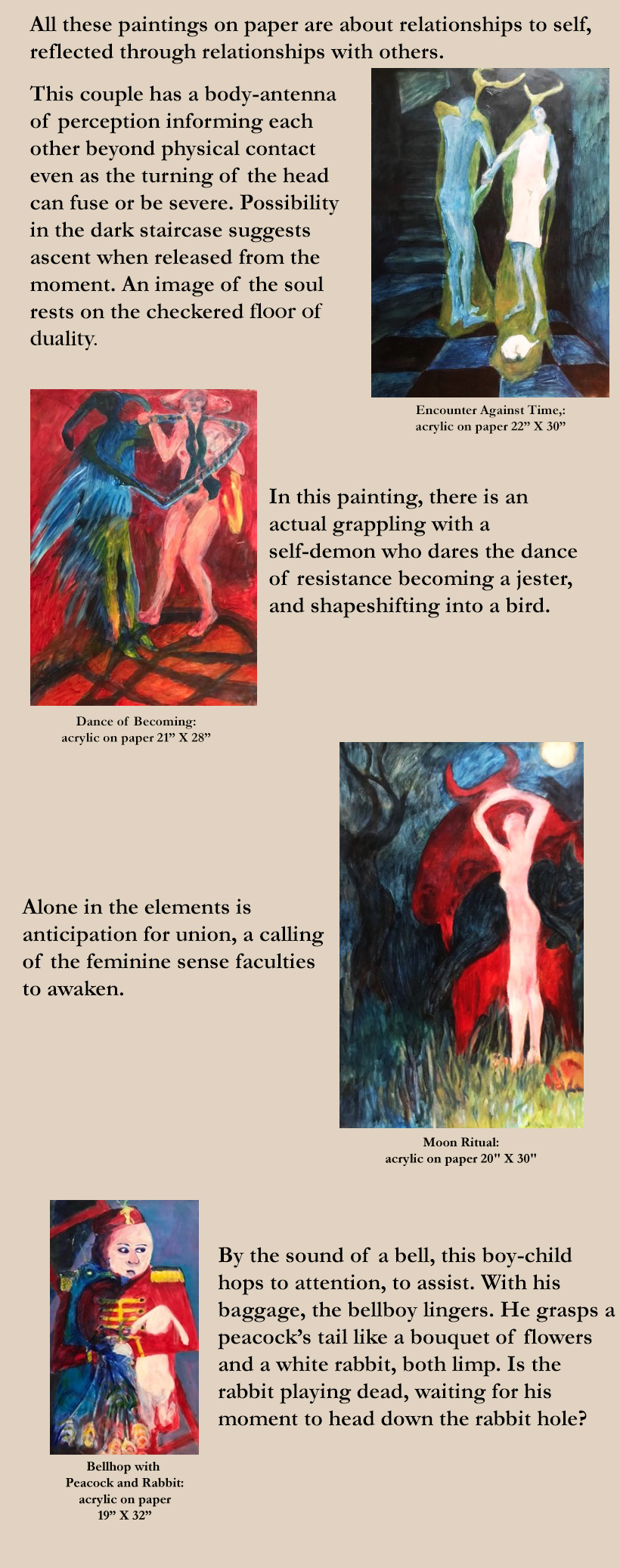

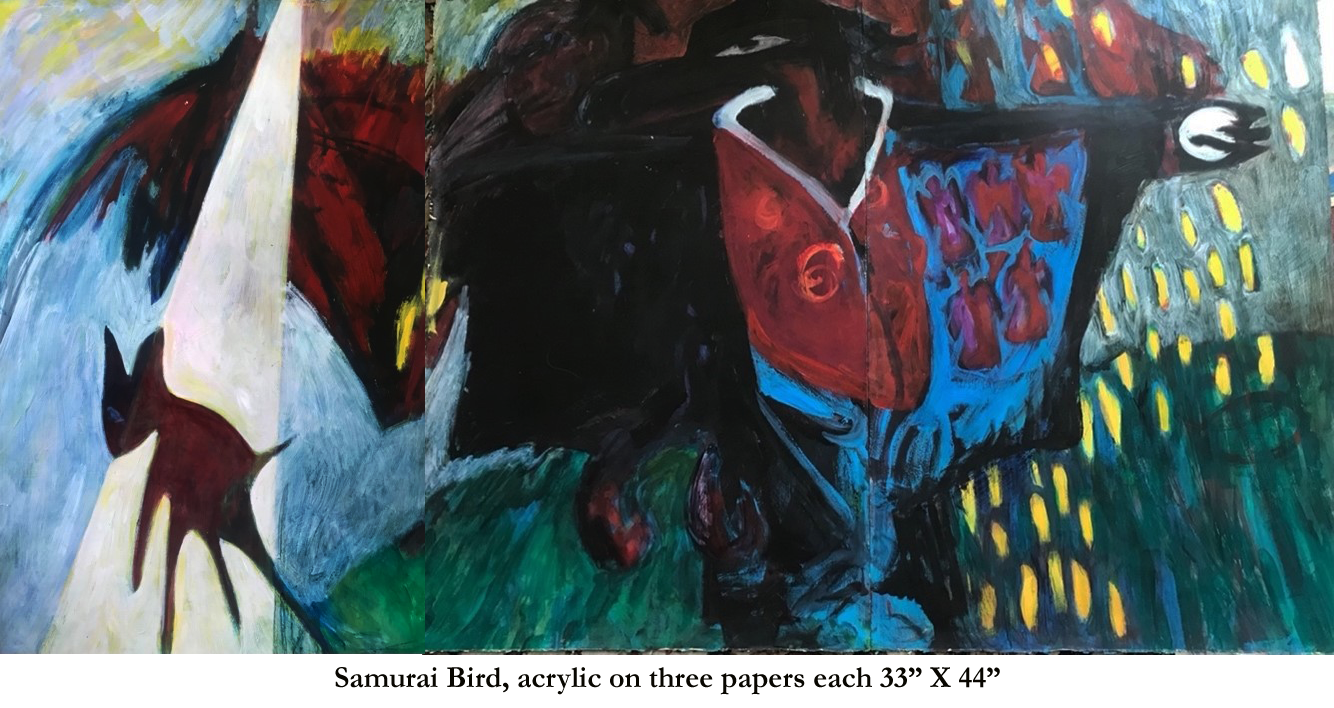
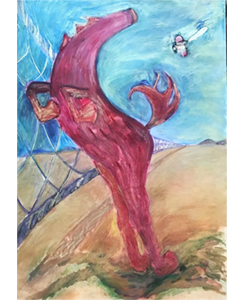
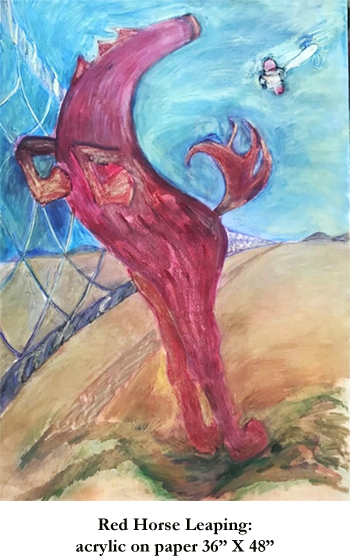 Once more a spacious desert-like expanse, but this time, a net stretches to the horizon. This mysterious net connotes connection, but also emptiness. Could this net infer a game? The word tennis is said to be derived from the French “take this,” when one player would serve the other.
Once more a spacious desert-like expanse, but this time, a net stretches to the horizon. This mysterious net connotes connection, but also emptiness. Could this net infer a game? The word tennis is said to be derived from the French “take this,” when one player would serve the other.
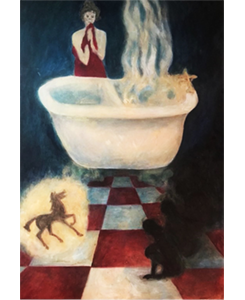
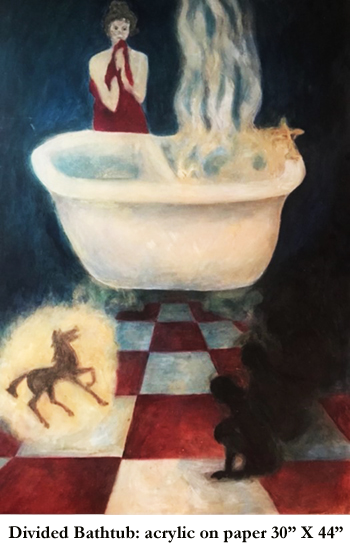 In a dream, I am invited into a hot bath, with no way of entering the tub except folded up as if entering a funeral urn. The tub is supported off the checkered floor by four green frogs. In the dream, shivering in a red towel I am shocked as to how this could happen and what I can do. In the space crouched are three dark menacing beings murmuring. They remind me of harpies symbols of death, fear, and the underworld. A small wild red horse is reminiscent of the light under a bushel basket. The harpies are held at bay by the horse.
In a dream, I am invited into a hot bath, with no way of entering the tub except folded up as if entering a funeral urn. The tub is supported off the checkered floor by four green frogs. In the dream, shivering in a red towel I am shocked as to how this could happen and what I can do. In the space crouched are three dark menacing beings murmuring. They remind me of harpies symbols of death, fear, and the underworld. A small wild red horse is reminiscent of the light under a bushel basket. The harpies are held at bay by the horse.
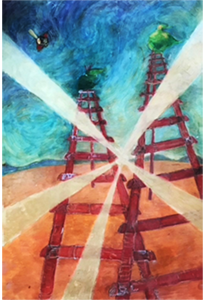
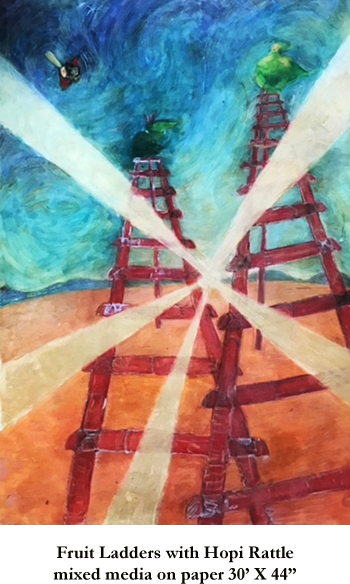 This image arose from a family journey through a Southwest Navajo reservation when our daughter was small. The inhabitants there wondered about my husband’s tribe for his extreme height and facial features. He told them his tribe was the Japanese tribe and they nodded.
This image arose from a family journey through a Southwest Navajo reservation when our daughter was small. The inhabitants there wondered about my husband’s tribe for his extreme height and facial features. He told them his tribe was the Japanese tribe and they nodded.